GPU Gems
GPU Gems is now available for free in HTML format. Click here to start reading!
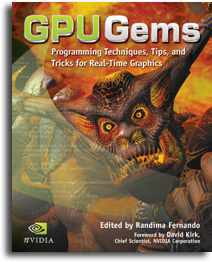
 Welcome to the home page for GPU Gems: Programming Techniques, Tips, and Tricks for Real-Time Graphics. GPU Gems is hard bound, 816 pages, and in full color throughout, with over 300 diagrams and screenshots. It was released at GDC 2004 and is now available for purchase. We invite you to take a look around the site to learn more about the book.
Welcome to the home page for GPU Gems: Programming Techniques, Tips, and Tricks for Real-Time Graphics. GPU Gems is hard bound, 816 pages, and in full color throughout, with over 300 diagrams and screenshots. It was released at GDC 2004 and is now available for purchase. We invite you to take a look around the site to learn more about the book.
Latest News
- GPU Gems has been released, for free, on the NVIDIA Developer Site. Take a look!
- GPU Gems has been translated to Japanese.
- GPU Gems 2 will be available at the upcoming Game Developers Conference (March 7 - 11, 2005).
- GPU Gems has won a prestigious Front Line Award from Game Developer Magazine. The Front Line Awards recognize products that enable faster and more efficient game development, advancing the state of the art.
- Additional GPU Gems excerpts are now available.
- An interview with the editor of GPU Gems has been posted.
- The CD content that accompanies GPU Gems is now available.
- The second printing of GPU Gems is now underway.
- GPU Gems is now available for purchase. The book was released at GDC 2004, and was the runaway bestseller at the GDC bookstore.
Quick Links
- Purchasing Information
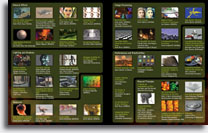
- Interview with the Editor
- From the Back Cover
- Table of Contents
- Visual Table of Contents
- Contributor Biographies
- Excerpts
- CD Content
- GPU Gems 2
From the Back Cover:
GPU Gems is a compilation of articles covering practical real-time graphics techniques arising from the research and practice of cutting-edge developers. It focuses on the programmable graphics pipeline available in today's graphics processing units (GPUs) and highlights quick and dirty tricks used by leading developers, as well as fundamental, performance-conscious techniques for creating advanced visual effects. The contributors and editors, collectively, bring countless years of experience to enlighten and propel the reader into the fascinating world of programmable real-time graphics.
GPU Gems includes contributors from:
| Alias Systems |
Pixar Animation Studios |
| Brown University |
Siemens Medical Solutions, USA |
| Croteam |
Softimage Co. |
| Cyan Worlds |
Softlab-NSK |
| Hochschule Bremen |
Sony Pictures Imageworks |
| Industrial Light & Magic |
Stanford University |
| iXBT.com |
University of California Davis |
| Monolith Productions |
UNC-Chapel Hill |
| New York University |
Universitat Pompeu Fabra |
| NVIDIA |
University of Utah |
| Paralelo Computação |
University of Waterloo |
| Piranha Bytes |
Editors
GPU Gems is edited by Randima (Randy) Fernando, Manager of Developer Education at NVIDIA.Section editors include NVIDIA engineers Kevin Bjorke, Cem Cebenoyan, Sim Dietrich, Simon Green, Juan Guardado, and John Spitzer.
Quotes
"This collection of articles is particularly impressive for its depth and breadth. The book includes product-oriented case studies, previously unpublished state-of-the-art research, comprehensive tutorials, and extensive code samples and demos throughout."
– Eric Haines, Author of Real-Time Rendering
“GPU Gems is a cool toolbox of advanced graphics techniques. Novice programmers and graphics gurus alike will find the Gems practical, intriguing and useful.”
- Tim Sweeney, Lead Programmer of Unreal at Epic Games
Table of Contents
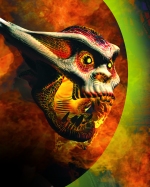 NATURAL EFFECTS
NATURAL EFFECTS
Effective Water Simulation from Physical Models
Mark Finch (Cyan Worlds)
Rendering Water Caustics
Juan Guardado (NVIDIA) and Daniel Sánchez-Crespo (Universitat Pompeu Fabra / Novarama Technology)
Skin in the “Dawn” Demo
Curtis Beeson and Kevin Bjorke (NVIDIA)
Animation in the “Dawn” Demo
Curtis Beeson (NVIDIA)
Implementing Improved Perlin Noise
Ken Perlin (New York University)
Fire in the “Vulcan” Demo
Hubert Nguyen (NVIDIA)
Rendering Countless Blades of Waving Grass
Kurt Pelzer (Piranha Bytes)
Simulating Diffraction
Jos Stam (Alias Systems)
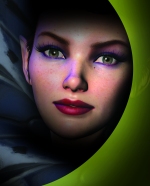 LIGHTING AND SHADOWS
LIGHTING AND SHADOWS
Efficient Shadow Volume Rendering
Morgan McGuire (Brown University)
Cinematic Lighting
Fabio Pellacini and Kiril Vidimce (Pixar Animation Studios)
Shadow Map Antialiasing
Michael Bunnell (NVIDIA) and Fabio Pellacini (Pixar Animation Studios)
Omnidirectional Shadow Mapping
Philipp Gerasimov (iXBT.com)
Generating Soft Shadows Using Occlusion Interval Maps
William Donnelly (University of Waterloo) and Joe Demers (NVIDIA)
Perspective Shadow Maps: Care and Feeding
Simon Kozlov (Softlab-NSK)
Managing Visibility for Per-Pixel Lighting
John O’Rorke (Monolith Productions)
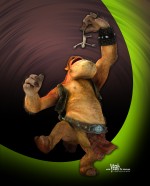 MATERIALS
MATERIALS
Real-Time Approximations to Subsurface Scattering
Simon Green (NVIDIA)
Ambient Occlusion
Matt Pharr and Simon Green (NVIDIA)
Spatial BRDFs
David McAllister (NVIDIA)
Finite-Radius Sphere Environment Mapping
Kevin Bjorke (NVIDIA)
Texture Bombing
R. Steven Glanville (NVIDIA)
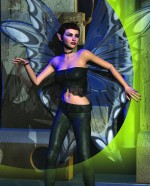 IMAGE PROCESSING
IMAGE PROCESSING
Real-Time Glow
Greg James (NVIDIA) and John O’Rorke (Monolith Productions)
Color Controls
Kevin Bjorke (NVIDIA)
Depth of Field: A Survey of Techniques
Joe Demers (NVIDIA)
High-Quality Filtering
Kevin Bjorke (NVIDIA)
Fast Filter Width Estimates with Texture Maps
Matt Pharr (NVIDIA)
The OpenEXR File Format
Florian Kainz, Rod Bogart, and Drew Hess (Industrial Light & Magic)
A Framework for Image Processing
Frank Jargstorff (NVIDIA)
 PERFORMANCE AND PRACTICALITIES
PERFORMANCE AND PRACTICALITIES
Graphics Pipeline Performance
Cem Cebenoyan (NVIDIA)
Efficient Occlusion Culling
Dean Sekulic (Croteam)
The Design of FX Composer
Christopher Maughan (NVIDIA)
Using FX Composer
Christopher Maughan (NVIDIA)
An Introduction to Shader Interfaces
Matt Pharr (NVIDIA)
Converting Production RenderMan Shaders to Real-Time
Steve Marshall (Sony Pictures Imageworks)
Integrating Hardware Shading into Cinema 4D
Jörn Loviscach (Hochschule Bremen)
Leveraging High-Quality Software Rendering Effects in Real-Time Applications
Alexandre Jean Claude and Marc Stevens (Softimage)
Integrating Shaders into Applications
John O’Rorke (Monolith Productions)
 BEYOND TRIANGLES
BEYOND TRIANGLES
A Toolkit for Computation on GPUs
Ian Buck and Tim Purcell (Stanford University)
Fast Fluid Dynamics Simulation on the GPU
Mark Harris (University of North Carolina at Chapel Hill)
Volume Rendering Techniques
Milan Ikits (University of Utah), Joe Kniss (University of Utah), Aaron Lefohn (University of California, Davis), and Charles Hansen (University of Utah)
Applying Real-Time Shading to 3D Ultrasound Visualization
Thilaka Sumanaweera (Siemens Medical Solutions USA, Inc.)
Real-Time Stereograms
Fabio Policarpo (Paralelo Computação Ltda.)
Deformers
Eugene d’Eon (University of Waterloo)
Contributor Biographies
Curtis Beeson (NVIDIA Corporation)
Curtis Beeson moved from SGI to NVIDIA’s Demo group over five years ago, and focuses on the art path, object model, and DirectX renderer of the NVIDIA demo engine. He began working in 3D while attending CarnegieMellonUniversity, where he generated environments for playback on head-mounted displays at resolutions that left users legally blind. Curtis specializes in the art path and object model of the NVIDIA Demo team’s scenegraph API, while fighting the urge to succumb to the dark offerings of management in marketing.
Kevin Bjorke (NVIDIA Corporation)
Kevin Bjorke works in Developer Relations developing and promoting next-generation art tools and entertainments, with a particular eye towards the possibilities inherent in programmable shading hardware. Before joining NVIDIA, he worked extensively in the film, television, and game industries, supervising development and imagery for Final Fantasy: The Spirits Within and The Animatrix; performing numerous technical director and layout animation duties on Toy Story and A Bug’s Life; developing games on just about every commercial platform; producing theme park rides; animating too many TV commercials; and booking daytime TV talk shows. He attended several colleges, eventually graduating from the California Institute of the Arts film school. He has been a regular speaker at SIGGRAPH, GDC, and similar events for the past decade.
Rod Bogart (Industrial Light & Magic)
Rod Bogart came to Industrial Light & Magic in 1995 after spending three years as a software engineer at Pacific Data Images. His early work in camera tracking is published in Graphics Gems II. At ILM, Rod developed the core engine of the interactive compositing tools, as well as oversaw much of the design and implementation of ILM’s other image processing and image viewing techniques.
Ian Buck(Stanford University)
Ian Buck is completing his PhD degree in computer science at the Stanford University Graphics Lab, researching general purpose computing models for GPUs. His research focuses on programming language design for graphics hardware, as well as general computing applications that map to graphics hardware architectures. He received his BSE in computer science fromPrincetonUniversityin 1999, and is a recipient of Stanford School of Engineering and NVIDIA fellowships.
Michael Bunnell(NVIDIA Corporation)
Michael Bunnell graduated from Southern Methodist University with degrees in computer science and electrical engineering. He wrote the Megamax C compiler for the Macintosh, Atari ST, and Apple IIGS, before cofounding what is now LynuxWorks. After working on real-time operating systems for nine years, he went to work at Silicon Graphics working on image processing, and video and graphics software. Next, he worked at Gigapixel, 3dfx, and now NVIDIA, where, interestingly enough, he is working on compilers again—this time, shader compilers.
Cem Cebenoyan(NVIDIA Corporation)
Cem Cebenoyan is a software engineer working on the Technical Developer Relations team. He spends his days researching graphics techniques and helping game developers get the most out of graphics hardware. He has spoken at past Game Developer Conferences on character animation, graphics performance, and nonphotorealistic rendering. Before joining NVIDIA, he was a student/research assistant in the Graphics, Visualization, and Usability Lab at the Georgia Institute of Technology.
Joe Demers(NVIDIA Corporation)
Joe Demers received his BS fromCarnegieMellonUniversityand an MS from theUniversity of Southern California. He worked on Nendo, a simple but powerful 3D modeling and painting package from Nichimen Graphics, and numerous demos at NVIDIA, where he has worked since 1999.
Eugene d’Eon (University of Waterloo)
Eugene recently completed a BS at the University of Waterloo in Applied Mathematics and Computer Science. He currently resides in California working on the Demo Team at NVIDIA. He can occasionally be found playing piano late at night at the office.
Sim Dietrich(NVIDIA Corporation)
Sim Dietrich manages the U.S. Technical Developer Relations team at NVIDIA. Sim has written chapters for Game Programming Gems 1 and Game Programming Gems 2, and served as editor of the Graphics Display section of Gems 2. Sim was a key contributor to the CgFX effort, bringing real-time shaders to 3ds max, Maya, and SOFTIMAGE|XSI for the first time. Sim’s interests include new shadow techniques and improving graphics workflow through efforts like Cg and CgFX.
William Donnelly(University of Waterloo)
William Donnelly is an undergraduate student studying mathematics and computer science at the University of Waterloo in Ontario, Canada. He has completed internships with Okino Computer Graphics writing extensions to the NuGraf ray-tracer, and with NVIDIA creating real-time graphics demos for the GeForce FX. He has been destined for computer graphics ever since his dreams were shattered at the age of eight upon discovering that Lego set building is not a viable career path.
Randima Fernando(NVIDIA Corporation)
Randima (Randy) Fernando has loved computer graphics from the age of eight. Working in NVIDIA’s Developer Technology group, he helps to teach developers how to take advantage of the latest GPU technology. Randy has a BS in computer science and an MS in computer graphics, both from Cornell University. He has been published in SIGGRAPH and was a coauthor (along with Mark Kilgard) of The Cg Tutorial: The Definitive Guide to Programmable Real-Time Graphics.
Mark Finch(Cyan Worlds)
Mark Finch has a BS in physics from Georgia Institute of Technology, and an MS in computer science from theUniversity ofNorth CarolinaatChapel Hill . His professional graphics work started when he did image processing and rendering for the Star Wars program, but he soon moved to games programming, which he finds equally challenging and more constructive. He is currently the graphics programmer behind Cyan’s Uru project.
Philipp Gerasimov(iXBT.com)
Philipp Gerasimov is a Russian 3D programmer and game designer. He is currently working on the creation of RightMark 3D, an open-source 3D hardware benchmark by iXBT.
R. Steven Glanville(NVIDIA Corporation)
Steve received his PhD in computer science from UC Berkeley in 1977. In 1978 he founded Silicon Valley Software and served as president for 15 years, where he developed C and FORTRAN compilers. After spending too many years attending SIGGRAPH, in 1995 he finally made the switch into graphics and began developing OpenGL drivers. His past eventually caught up with him, however, and he is now one of the principal designers and implementers of the Cg language at NVIDIA.
Simon Green(NVIDIA Corporation)
Simon Green is an engineer in the technical developer relations group at NVIDIA. After graduating with a degree in Computer Science from Reading University, England, Simon worked in the video games industry for two years before emigrating to the United States to work for Silicon Graphics. He has presented at the Game Developer and Apple World Wide Developer Conferences. His interests include OpenGL, cellular automata, image based rendering and analogue synthesizers. He spends his time at NVIDIA thinking up new and interesting ways to abuse graphics hardware.
Juan Guardado(NVIDIA Corporation)
In between riding camel-back through the Sahara and lounging on the Brazilian coast, Juan Guardado enjoys contributing graphics technologies to the computer games industry. After graduating with a bachelor of computer engineering degree from McGill University he joined Matrox Graphics, where his work culminated in the development of hardware-accelerated displacement mapping. He now works at NVIDIA with the Technical Developer Relations team based in the United Kingdom. He has given numerous talks at industry events, including GDC (U.S.and Europe ), and has been published in Shader X and Gamasutra online magazine.
Charles Hansen(University of Utah)
Charles Hansen received a BS in computer science from Memphis State University in 1981, and a PhD in computer science from the University of Utah in 1987. He is currently an associate professor of computer science at the University of Utah. From 1989 to 1997, he was a technical staff member in the Advanced Computing Laboratory (ACL) located at Los Alamos National Laboratory, where he formed and directed the visualization efforts of the ACL. He was a Bourse de Chateaubriand Postdoctoral Fellow at INRIA, Rocquencourt France, in 1987 and 1988. His research interests include large-scale scientific visualization and computer graphics.
Mark J. Harris(University of North Carolina at Chapel Hill)
Mark Harris received a BS from the University of Notre Dame in 1998, and a PhD in computer science from theUniversity ofNorth CarolinaatChapel Hill in 2003. At UNC, Mark’s research covered a wide variety of computer graphics topics, including real-time cloud simulation and rendering, general purpose computation on GPUs, global illumination, nonphotorealistic rendering, and virtual environments. During his graduate studies Mark worked briefly at Intel, iROCK Games, and NVIDIA. Mark now works with NVIDIA’s Technical Developer Relations team based in the United Kingdom.
Drew Hess(Industrial Light & Magic)
Drew Hess is a software developer in the Software Research and Development department at Industrial Light & Magic. In a past life, he was a member of the IA-64 architecture team at Intel Corporation. Drew received a BS in Computer Engineering from the University of Illinois at Urbana-Champaign and an MS in Computer Science from Stanford University.
Milan Ikits(University of Utah)
Milan Ikits is a PhD candidate in the School of Computing at the University of Utah, and a research assistant at the Scientific Computing and Imaging Institute. His current research interests lie in the areas of computer graphics, scientific visualization, immersive environments, and human-computer interaction. He received a Diploma in Computer Science from the Budapest University of Technology and Economics in 1997. Milan is the creator of the popular OpenGL Extension Wrangler library (GLEW).
Greg James(NVIDIA Corporation)
Growing up in a house where 3D graphics movies and computers were left unlocked and out in plain sight, it's no wonder that Greg became addicted to graphics at an early age. Attempts to cure him using respectable math and science have failed, but he did come away with a B.S. in Physics and minor in studio art in 1995. Fortunately, Greg has found a safe environment with the developer community outreach program at NVIDIA where he helps himself and others work through their afflictions. He has developed and contributed to visual effects in many games. Among these are the reflective water animation in Morrowind, the glow in Tron 2.0, and a volume translucency effect for an upcoming title. His works have appeared in various computer graphics and physics publications, and he is particularly excited by the combination of physics and computer graphics.
Frank Jargstorff(NVIDIA Corporation)
Frank is a software engineer working on the Technical Developer Relations team. He works on tools for digital content creation and helps DCC companies integrate new technologies into their products. Before joining NVIDIA, he worked for IBM, CoCreate, and Fraunhofer Research on topics ranging from streaming 3D to mainframe operating systems. Frank received his degree in Computer Science in 1997 from theUniversity ofTübingen,Germany.
Alexandre Jean-Claude(Softimage)
Alexandre Jean Claude currently works as the team lead for rendering and pipeline at Softimage. For the past few years, he has focused on game development pipelines and hardware rendering technologies. He graduated from the Université du Québec à Montréal in computer science.
Florian Kainz(Industrial Light & Magic)
Florian Kainz joined Industrial Light and Magic (ILM) in 1995 as a member of the research and development group. In his current role of computer graphics principal engineer, he leads the team that is responsible for the core architecture of ILM’s in-house computer animation system. Kainz has worked on developing particle, fur, and implicit surface renderers, as well as a network protocol that forms the basis of a fault-tolerant, distributed batch processing system. Kainz is one of the authors of the OpenEXR file format. Before joining ILM, Kainz worked as a software engineer for Steiner Film inMunich ,Germanyand for Twenty-Five Frames inSingapore, writing image processing and 3D rendering software. He received a degree in computer science in 1992, from the Technical University in Munich, Germany.
Joe Kniss(University of Utah)
Joe Kniss received a BS degree in 1999 from IdahoStateUniversity and an MS degree in computer science from theUniversity ofUtahin 2002. He is currently pursuing a PhD degree in computer science at theUniversity ofUtah, where he is a member of the Scientific Computing and Imaging Institute. His research interests include computer graphics, light transport in participating media, human-computer interaction, and immersive environments.
Simon Kozlov(SoftLab-NSK)
Simon Kozlov graduated fromNovosibirskStateUniversityin June 2003, specializing in physics and computer science. Since 2001, Simon has worked at SoftLab-NSK, a game developer inRussia. Simon’s current project is ‘Rig’n ‘Roll,' a truck simulation game.
Aaron Lefohn(University of California, Davis)
Aaron Lefohn is a PhD student in the computer science department at the University of California at Davis and a graphics software engineer at Pixar Animation Studios. His research interests include general computation with graphics hardware, photorealistic rendering, and physically-based animation. Aaron completed his MS in computer science at the University of Utah in 2003, an MS in theoretical chemistry from the University of Utah in 2001, and a BA in chemistry from Whitman College in 1997. Aaron is an NSF graduate fellow in computer science.
Jörn Loviscach(Hochschule Bremen)
Jörn Loviscach published many articles in popular computing magazines about programming and electronic music before receiving his doctorate degree in mathematical physics in 1993. He later worked at several computer magazines, becoming deputy editor-in-chief of the German computer magazine, c’t. He remained in this position for three years before accepting a professorship at Hochschule Bremen (University of Applied Sciences) in 2000, where he now teaches and researches in the field of computer graphics.
Stephen Marshall(Sony Pictures Imageworks)
Stephen Marshall has worked at Sony Pictures Imageworks as a software engineer and currently is an effects technical director. Before joining Imageworks, Stephen was a developer in Engineering Animation’s software and litigation animation divisions.
Christopher Maughan(NVIDIA Corporation)
Chris has worked in the graphics hardware industry for ten years. He began his career working on a video digitizer product for a startup company, soon followed by a move to 3Dlabs where he wrote the first OpenGL device driver for Windows 95 in collaboration with Microsoft. Chris then developed the company’s DirectX driver, staying for 5 years before leaving to join NVIDIA. At NVIDIA he works in the Developer Tools group, focusing on providing tools and sample software for game developers. Chris works from home in York, in the North of England, where he lives with his wife Stacey. He’s still trying to figure out what he did right to get the girl, the job, and the location.
David McAllister(NVIDIA Corporation)
David has been a computer graphics architect for NVIDIA since 2000. He received a PhD in computer science from the University ofNorth Carolina atChapel Hill in 2002, where he did research in image-based rendering, reflectance measurement and representation, and graphics hardware. He spent the summer of 1997 at Hewlett-Packard working on the PixelFlow graphics supercomputer. David worked at Evans & Sutherland from 1989 to 1996, and received a BS from theUniversity ofUtahin 1995. David lives in Salt Lake City, Utah.
Morgan McGuire(Brown University)
Morgan McGuire leads the Games Research Group atBrown University. His PhD research is on real-time global illumination models for games. He has received master’s degrees from MIT andBrown University, and is the project manager for the Open Source G3D library at graphics3d.com.
Hubert Nguyen(NVIDIA Corporation)
Hubert is a software engineer at NVIDIA working on the Demo team. He spends his time searching for novel effects that show off the features of NVIDIA’s latest GPUs. He has spoken at past Game Developer Conferences on the techniques used to create the NVIDIA demos. Before joining NVIDIA, Hubert was an engineer at 3dfx Interactive, the creators of Voodoo graphics. Prior to 3dfx, Hubert was part of the R&D department of Cryo Interactive (Paris, France). Hubert started to develop 3D graphics programs when he was involved in the European Demoscene. He holds a bachelor degree in computer Science.
John O’Rorke(Monolith Productions)
John O'Rorke has been creating games since the age of six. During high school he worked after school with Hewlett-Packard in their firmware division and then attended the DigiPen Institute of Technology. He is currently an engine architect at Monolith Productions, where he has worked on Aliens vs. Predator 2, Tron 2.0, No One Lives Forever 2: A Spy in H.A.R.M.'s Way, and is currently developing engine technology for future products.
Fabio Pellacini(Pixar Animation Studios)
Fabio Pellacini was born in Italy, where he spent the first 24 years of his life. During this time he received a Laurea degree in physics from University of Parma, and worked one year for Milestone building a physics engine. Following this experience he decided to pursue his interests in computer graphics by moving to the United States, where he received a PhD in computer graphics from Cornell University and published a few papers (four of which got luckily accepted to SIGGRAPH). These days he is spending his time in a dark office at Pixar Animation Studios designing and implementing the next generation of lighting technology for the studio.
Kurt Pelzer(Piranha Bytes)
Currently Kurt Pelzer is a Senior Software Engineer at Piranha Bytes, where he worked on the PC game Gothic, the top-selling Gothic II (awarded as “RPG of the Year” in Germany during 2001 and 2002, respectively), and the add-on Gothic II - The Night of the Raven. Prior he was a Senior Programmer at Codecult and developed several real-time simulations and technology demos build on Codecult's high-end 3D-Engine Codecreatures (e.g., a simulation of the Shanghai TRANSRAPID track for SIEMENS AG, and the well-known Codecreatures Benchmark Pro). He has published in ShaderX 2 and Game Programming Gems 4.
Ken Perlin(New York University)
Ken Perlin, a professor in the NYU Department of Computer Science, directs the Media Research Laboratory and Center for Advanced Technology. He has received an Academy Award for his procedural texturing algorithms (widely used in games and films), the NYC Mayor’s award for Excellence in Science and Technology, the Sokol award for outstanding NYU Science faculty, and an NSF PYI Award. Ken received a PhD in computer science from NYU and a BA in theoretical mathematics from Harvard. He has headed software development at R/GA and MAGI, and has worked on various films, starting with Tron. He serves on the Board of Directors of NYSIA.
Matt Pharr(NVIDIA Corporation)
Matt Pharr is a member of the technical staff at NVIDIA, where he works on issues related to high-quality interactive graphics, programmable shading, and language features in the Cg group. Previously, he was a co-founder of Exluna, which developed off-line rendering software, and was investigating advanced shading algorithms for graphics hardware. He was a PhD student in the Stanford University Graphics Lab, where he researched systems issues for rendering, theoretical foundations of rendering, and published a series of SIGGRAPH papers on these topics. With Greg Humphreys, he is the author of the book Physically-Based Rendering: From Theory to Implementation, which will be published in 2004.
Fabio Policarpo(Paralelo Computação Ltda.)
Fabio Policarpo graduated fromUFFFederalUniversityinRio de Janeiroand has written books and applications for classical and real-time computer graphics.
Tim Purcell(Stanford University)
Tim Purcell is finishing his PhD in computer science atStanfordUniversity. He received a BS in computer science from theUniversity ofUtahin 1998, and an MS in computer science fromStanfordUniversityin 2001. He is a recipient of the National Science Foundation Graduate Research Fellowship, and is an NVIDIA fellowship winner. His current research interests include stream programming, ray tracing, and leveraging GPUs for general purpose computation.
Daniel Sánchez-Crespo(Universitat Pompeu Fabra)
Dani Sánchez-Crespo is one of the leading voices in game research in Spainand Europe . His academic career started in 1997, working as a researcher on user interfaces and virtual reality at Universitat Politècnica de Catalunya in Barcelona , Spain. By 2001, he had founded Europe ’s first master’s degree in video game creation, held at Universitat Pompeu Fabra, where he still teaches and serves as the degree’s director. He’s written three books, most recently Core Techniques and Algorithms in Game Programming, published by New Riders/Prentice-Hall. His latest venture is Novarama, a game development studio focused on new forms of entertainment for the masses and recently awarded as Spain’s third most innovative company for 2003.
Dean Sekulic(Croteam)
With a couple of his best friends, Dean Sekulic founded Croteam in 1993, right after he realized that making computer games could be more fun than just playing them. For the last couple of years, he has specialized in coding sound and vision. He also graduated from Zagreb University of Business Informatics and Computer Design in 1996, and with a little luck, he hopes to stay in computer game programming for the next one or two hundred years.
John Spitzer(NVIDIA Corporation)
John Spitzer is director of European Developer Technology at NVIDIA, where he oversees development of tools, technology, art, and educational materials for the 3D software development community. John collaborates with game developers on a daily basis, evaluating the technology in their games and assisting in the implementation of advanced visual effects. John has participated in a number of industry standards committees relating to 3D graphics, including the OpenGL Architectural Review Board (ARB), and is a founding member and chair of the SPEC OpenGL Performance Characterization (SPECopc) organization. While serving on SPECopc, John defined, designed, and implemented the industry standard SPECglperf benchmark. John presents at many developer educational events each year on topics ranging from performance optimization to advanced shading techniques. John holds bachelor’s and master’s degrees in computer science from Rice University.
Jos Stam(Alias Systems)
Jos Stam is a research scientist at Alias Systems. He holds a PhD in computer science from theUniversity ofTorontoand is interested in most areas of computer graphics. He is a regular contributor at SIGGRAPH and other conferences. Although he is interested in most areas of computer graphics, his best research has been in the areas of physics-based animation, rendering, texture mapping, and subdivision surfaces.
Marc Stevens(Softimage)
Marc Stevens holds a masters degree in computer science from Brown Universityand has over 12 years experience in the graphics industry. Marc is currently employed by Softimage/AVID, where he has held various positions over the past nine years in software development. He was one of the principal architects of SOFTIMAGE | XSI and is now the director of Research and Development and Special Projects for Softimage.
Thilaka S. Sumanaweera(Siemens Medical Solutions USA, Inc.)
Thilaka Sumanaweera has been having fun with first GL and then OpenGL since the late 1980s, creating 2-4D applications in Computer Vision, Image Processing and Medical Imaging. He received his PhD in Electrical Engineering from Stanford University in 1992, and then joined Radiological Sciences Laboratory at Stanford's Radiology Department as a post-doc and a research associate developing CT/MRI image fusion and image-guided neurosurgery. Currently a Fellow at Siemens Medical Solutions USA, Inc., Ultrasound Division, he holds many patents for techniques related to medical imaging and visualization, and has published extensively in medical journals.
Kiril Vidimce(Pixar Animation Studios)
Kiril Vidimce is a graphics software engineer in Pixar’s Research & Development group and is working on their next-generation renderer. Previously, he was locked down in the Visualization Lab atMississippiStateUniversityworking under the guidance of Professor David Banks and producing 3D graphics and publications. Kiril’s work has been published at SIGGRAPH, IEEE Visualization, IEEE Computer Graphics & Applications, and Graphics Interfaces. In his spare time and in between paper deadlines, he also managed to complete BS degrees in computer science and mathematics, and three internships at SGI, SRI, and Caltech. Originally from Macedonia’s capital and largest city, Skopje, he now resides in San Francisco, California.





